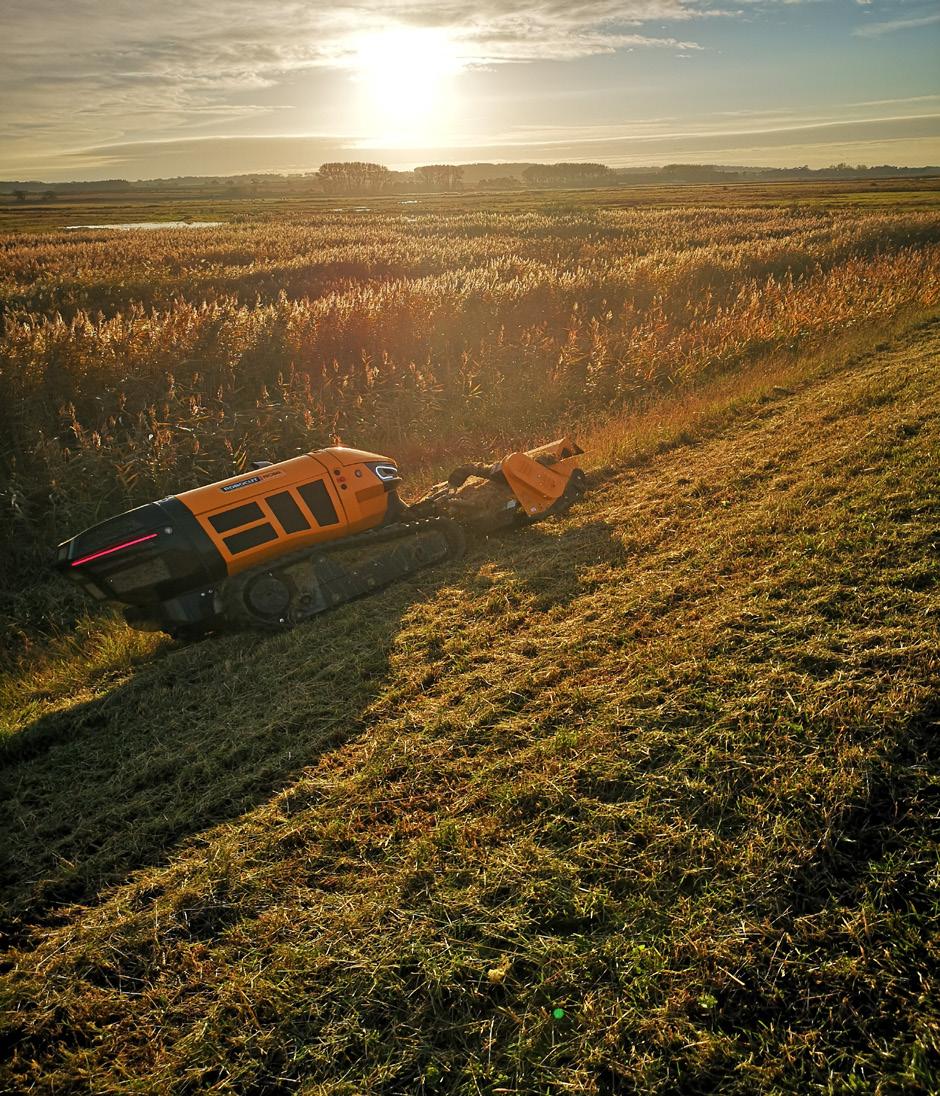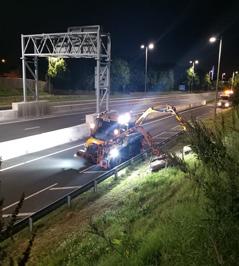
8 minute read
ARE YOU LISTENING INCLUSIVELY?
Catherine Baker, Director of CIRAS, talks about how an inclusive approach to listening can help make us all safer.

Advertisement
Everything is awesome when you are part of a team, right? I can think of some great teams I’ve had the privilege to work with, whether as volunteers or in work. You’re all on the same page and everyone is fired up to play their part and overcome challenges together.
The event, service or product is delivered with a sense of shared achievement. Awesome.
But it is not always like that. I’ve been in groups (hard to call them teams) where everyone else seemed to be on the same page. Maybe it’s the ‘banter’ which borders on offensive, maybe the awkward silence when I walk in the room, or not being given space to speak amongst the dominating voices. It’s hard to deliver your best in that context, and easy to let the majority view win even if it really didn’t seem to be the best solution.
Racial, language and cultural tensions were factors in the accident
Rail Accident Investigation Branch – 2020 Annual report This is one thing when you are working in an office or running a community event, but out in a safety critical environment this moves to another level. When frontline transport and infrastructure workers raised health, wellbeing or safety concerns through CIRAS in 2020/21:
11% chose to report confidentially because of fear of the consequences of voicing them openly.
57% did not believe managers would take their concerns seriously if reported directly. Real, recent examples where people got hurt, or were concerned that they could get hurt, but were unable to speak out. Not so awesome.
For 25 years, CIRAS has worked across the transport sector to enable workers to speak up with any concerns or ideas that could impact health, wellbeing or safety. By guaranteeing to protect the confidentiality of those who call and taking the time to listen to what they have to say, we enable leaders to hear voices that might otherwise remain unheard. Organisations can access critical intelligence, making it more likely that the workforce and public they serve will go home safe and well every day.
We believe that people are a critical part of any health and safety system, all people. Not only as the eyes and ears to know what is actually happening late in a shift on a cold wet night, but also as sensitive monitors of invisible cultural factors which we too often read about in accident reports … when it is too late.

Ray Britland Contracting are specialists in environmental work, the majority of our projects involving grass and wild flower seeding and mowing in terrain that would often be inaccessible to most standard machinery. Based in Cheshire and established for over thirty five years, today a substantial proportion of our work is linked to new road building projects and greensward maintenance on the UK motorway network. We have contracts for the maintenance of 120 reservoirs nationwide and various Forestry Commission sites across the country as well as extensive grass and scrub cutting on our A roads and Motorway network



COMING SOON!

The Office of Rail and Road expresses in their Risk Management Maturity Model the need to understand the ‘gap between the ‘work as imagined’ of the written health and safety management system (SMS) and the ‘work as done’ actions taken at the sharp end; the ‘here and now’ of task performance’. Only by really listening to all voices can we get the full picture.

The great thing about people is that we are all different, so we see things from different perspectives. Because of your background, culture and experiences you might notice something that would not register on my radar – and that something might just be the early warning that needs to be noticed to keep us all safe. It could be as simple as somebody being able to see a crack in a machine that is below the eyeline of their taller colleagues, or as subtle as the realisation by someone using English as a second language that the way an emergency procedure is written is ambiguous.
Noticing is just the start – only if that something is voiced and actually heard can it become useful.
Many organisations have made great progress in creating listening cultures where everyone is encouraged to speak out openly on safety. But is it working for everyone? Do we listen for the ‘safety silences’ to identify where there might be gaps in what we hear about because some viewpoints are not voiced or not heard?
Those with less secure employment contracts, those in any kind of minority (whether protected characteristics or not), those who are new to the team, those who have been burned by past experiences of speaking up – there are many factors influencing who chooses to speak up. Whether it is conscious or not, there are also factors influencing which voices are listened to most. It might make sense to trust a safety inspection by an experienced team member, but a passing comment by a site visitor about the way people are talking to each other on site might be far more valuable in unlocking the cause of an upward trend in near misses.
So here is the challenge of listening inclusively. The voices that we are less likely to hear are also the ones that are so valuable because they bring a new perspective.
It matters if I am distracted from a safety-critical task when the tea-break ‘banter’ offends or upset me. It matters if I’m not well protected by badly fitting PPE designed for a different physique. It matters if colleagues are slack with communications protocols and as a speaker of English as a second language I misinterpret an instruction. It matters even more if these things go unchecked because the voices that could raise them are not heard.
In 2017 CIRAS conducted a survey of transport staff and found that around 80% said they would feel confident to speak out on a safety issue. That’s most people, great. But what about the 20%? That could be a lot of voices, and different perspectives, that are never heard.
If we want to make our listening truly inclusive, we need to acknowledge that everyone is different. This is where having a broad range of routes for workers to raise concerns and ideas helps. A reporting app might be brilliant for some people, but others prefer to speak to a real person. Some are ok putting their name to a concern, for others this is a real barrier. A manager’s open door enables some to come forward, others would rather go to someone independent.
I would argue that a team can only be awesome if everyone has the opportunity to be heard, and the different perspectives together inform decisions. That way we’re all more likely to get home safe and well.
To find out more about the role that confidential health and safety reporting can play in your inclusive listening visit www.ciras.org.uk or contact marc. spillman@ciras.org.uk 020 3142 5320
Sukhy Hogwood Global
HSE in Design, Jacobs
AT JACOBS, WE DO THINGS DIFFERENTLY

What if we could provide solutions that improve the health and wellbeing of workers, increase the productivity of our design teams while adding value to our Clients through reduced costs over the lifecycle of a project?
As a solutions company we have always had HSE at the heart of our business. Our passion for safety and our courage to care for one another and our environment inspires mutual respect.
We are proud that in our culture, our people go beyond following legislation, procedures and processes. When we apply these fundamental principles of BeyondZero® to our engineering and design outputs, we can deliver solutions that raise the bar of health, safety and sustainability.
Using de5ign, we will provide solutions that improve the health and wellbeing of workers and increase the productivity of our design teams, while adding value to our clients through reduced costs over the lifecycle of a project.
Sukhy Hogwood

What is De5ign?
De5ign is our framework for HSE in Design which takes us beyond base legislative requirements and provides a consistent approach to safety in design across our global business.
The framework is scaleable in application from small streetscape design to advanced research and development and technology industry facilities providing support to our designers through a developing HSE in Design toolkit and integrated HSE in Design professionals to support our designers to maximise HSE benefits throughout the whole lifecycle of the project.

Why De5ign?
The greatest opportunity to reduce or eliminate risk to the health and safety of the worker and/or end user, lies with the designer. Designers need to understand the risks associated with the lifecycle of the asset and how their design decisions can influence how assets are built, operated, maintained and demolished. By considering the whole life cycle of a project our designers can not only produce designs which are safe but that are efficient, leading to reduction in programme length and cost savings in addition to the health and safety benefits provided.
De5ign is cross cutting with Jacobs approach to digital solutions, innovation and technology which integrate with De5ign to generate high value solutions for our Clients and customers and in addition, supports Jacobs key BeyondZero and Sustainability strategies.
Considering safety and constructability from the ground up reduced CAPEX from $0.5 - per litre to $0.4 per litre
Arthur P. Kennedy Water Treatment Plant, Canada
Find out more https://www.jacobs.com/de5ign

Safety innovations in our design on a major UK infrastructure project have saved $21 million and increased life spans of structures by 50 years





